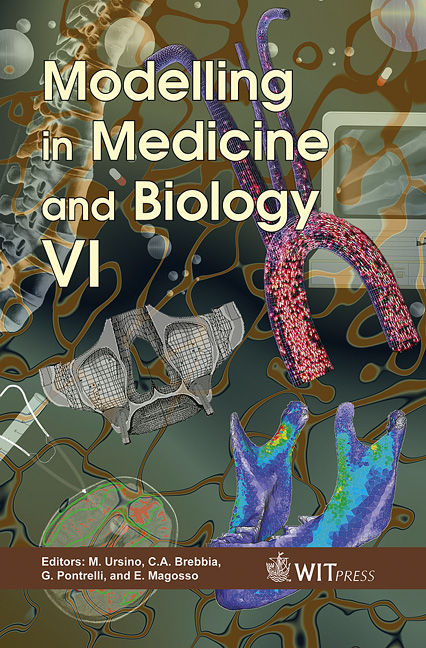Mechanical Stress And Hypertrophy
Price
Free (open access)
Transaction
Volume
8
Pages
9
Published
2005
Size
897 kb
Paper DOI
10.2495/BIO050171
Copyright
WIT Press
Author(s)
A. K. Macpherson, S. Neti, P. A. Macpherson, S. R. Houser, M. Hari & J. Marzillier
Abstract
There is accumulating evidence that mechanical stress on the left ventricle is a significant trigger for left ventricular hypertrophy. It has been known for sometime that mechanical stress activates a number of protein kinases and reprogramming of gene expression in the myocardium. A recent study has shown that there is a link between mechanical stress and the activation of angiotensin II (Ang II) receptors. Ang II has been known for a long time to initiate hypertrophy. Providing clinicians with stress maps of a patient’s heart would be useful aid in diagnosis. Based on a patient’s echo cardiogram the left ventricular (LV) characteristics of chamber wall velocity and position as a function of time and myocardium thickness are obtained. In addition Doppler measurements of velocity through the mitral valve are also extracted from the echo cardiogram. A simulation program is used to solve the equations of fluid flow in the LV during both diastole and systole. The velocity through the mitral valve is compared with the Doppler measurements as a check on the accuracy of the calculations. The flow velocities are used to calculate the shear stress on the myocardium as a function of time. It was found that the maximum stress occurs during the opening of the mitral valve near the valve. The regions of peak stress occur at different locations of the myocardium and septal wall over a heart cycle. It is not known if the average stress over a heart beat or the maximum shear stress that triggers the gene changes. There are large peaks in the stress and extended periods of low level stress which could play a significant role in the development of hypertrophy. Some initial tests on rabbits have shown that there is a variation in the development of certain biomarkers as a function of location. Keywords: hypertrophy, stress, biomarkers, Angiotensin II.
Keywords
hypertrophy, stress, biomarkers, Angiotensin II.





